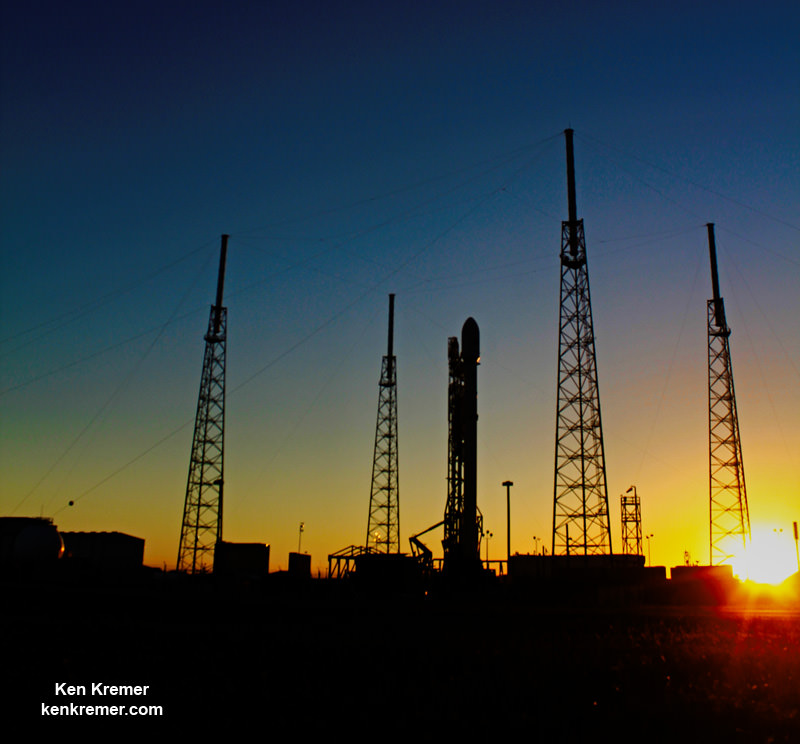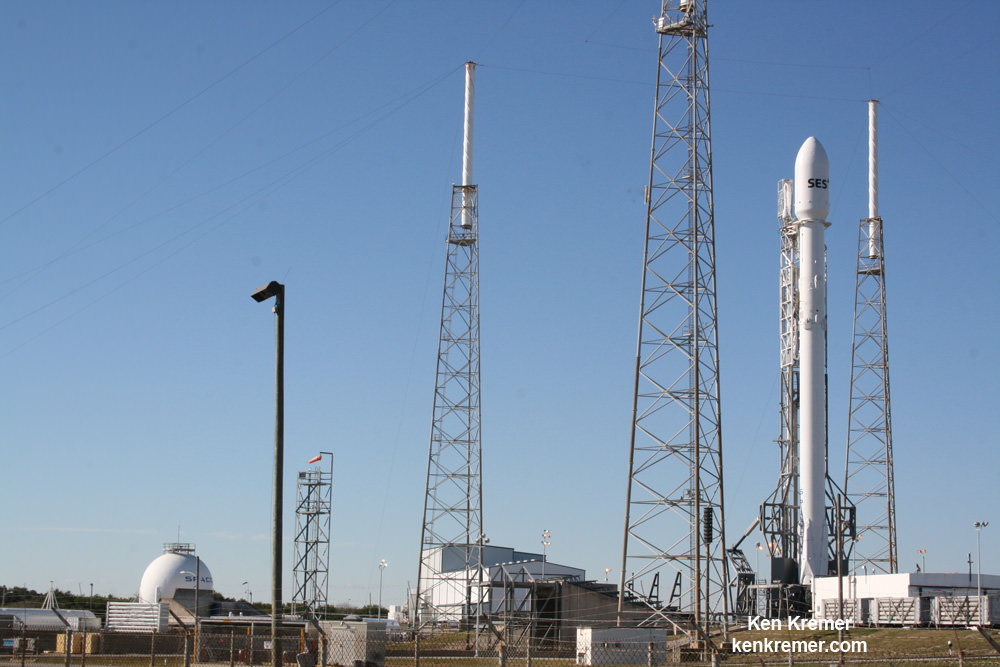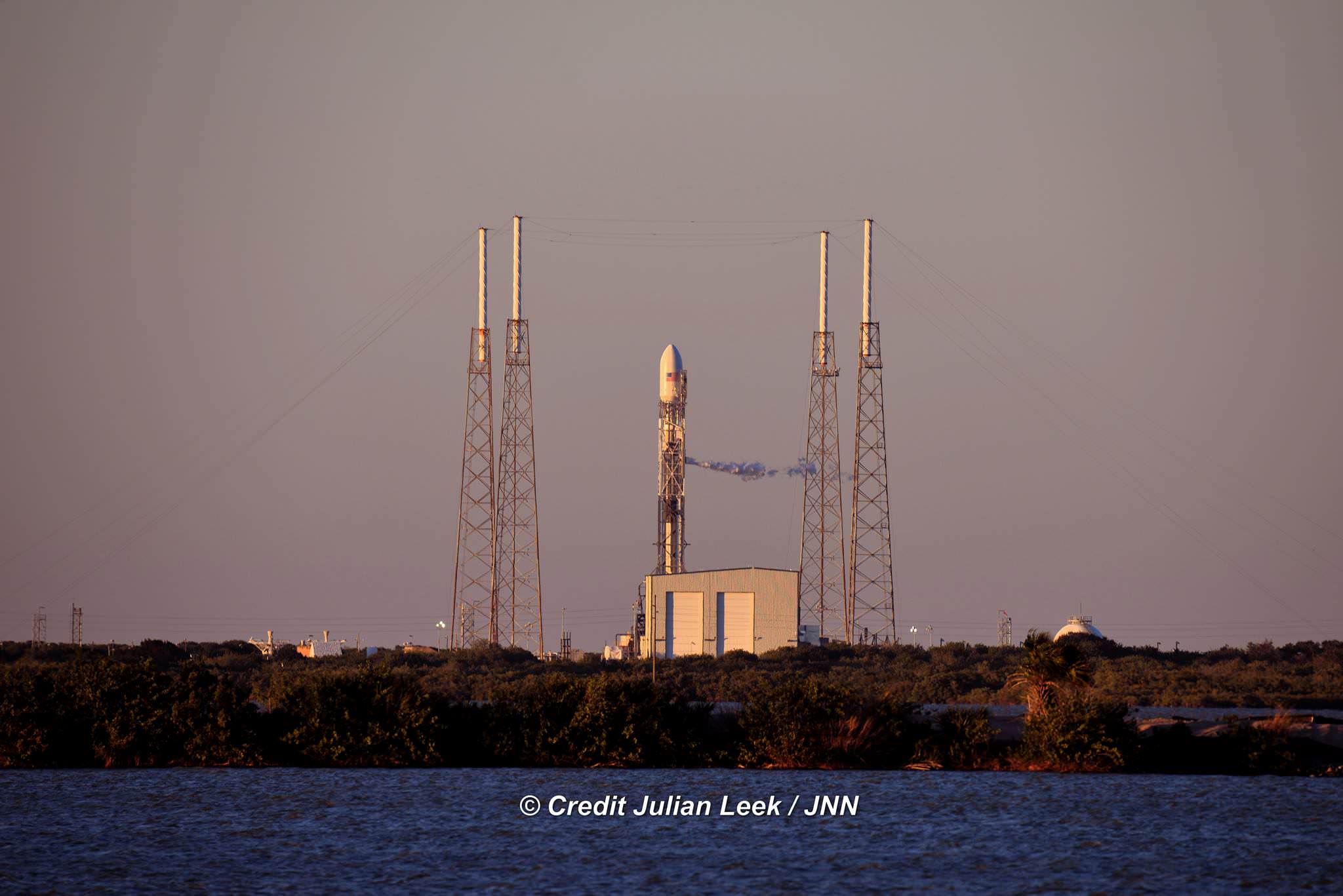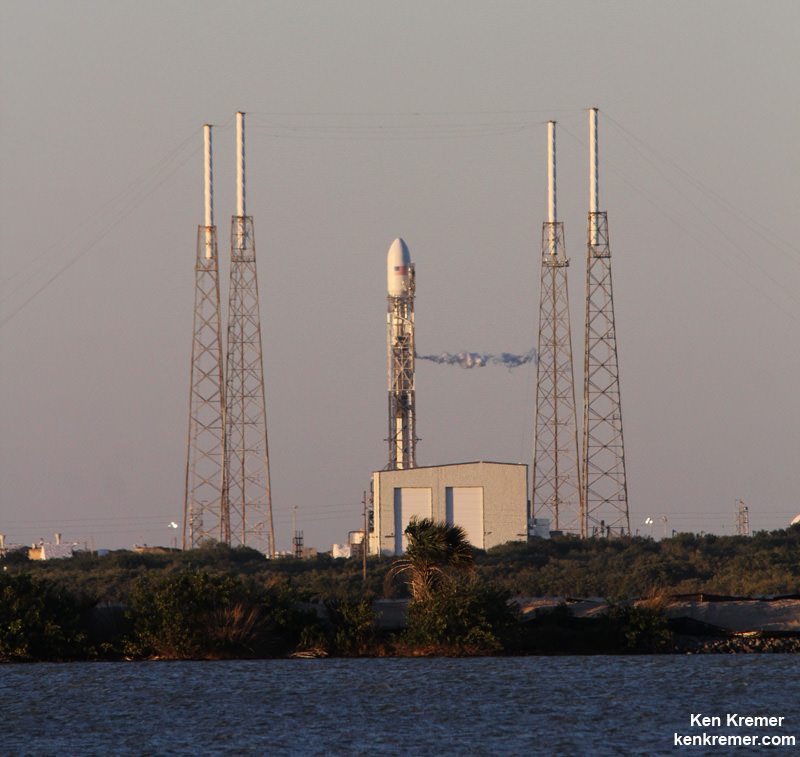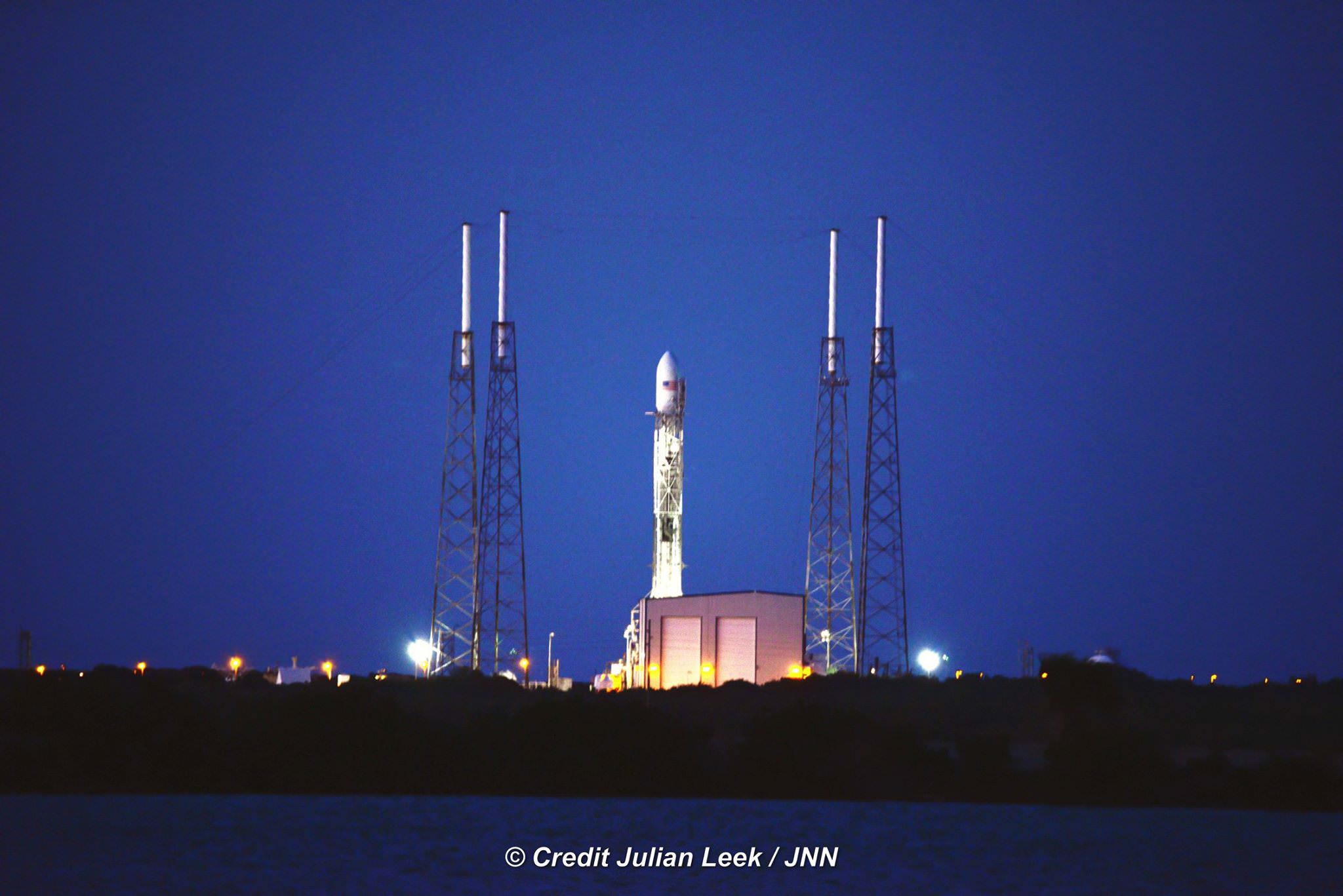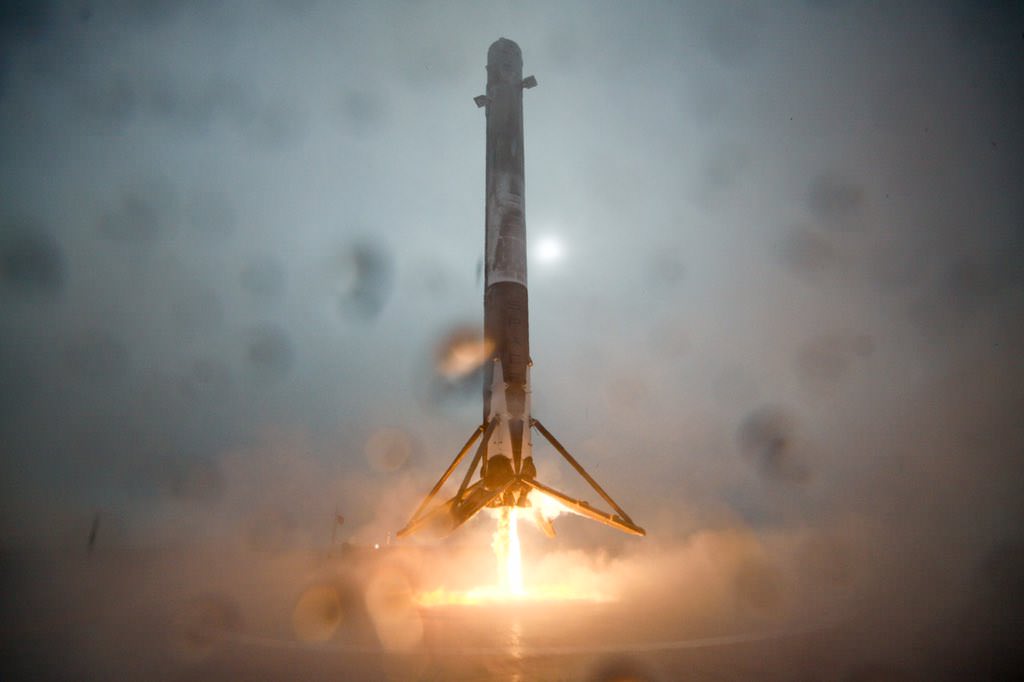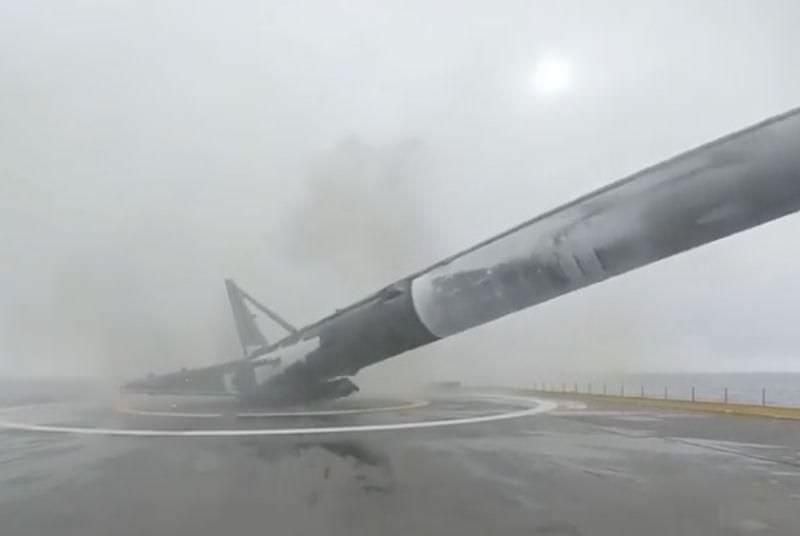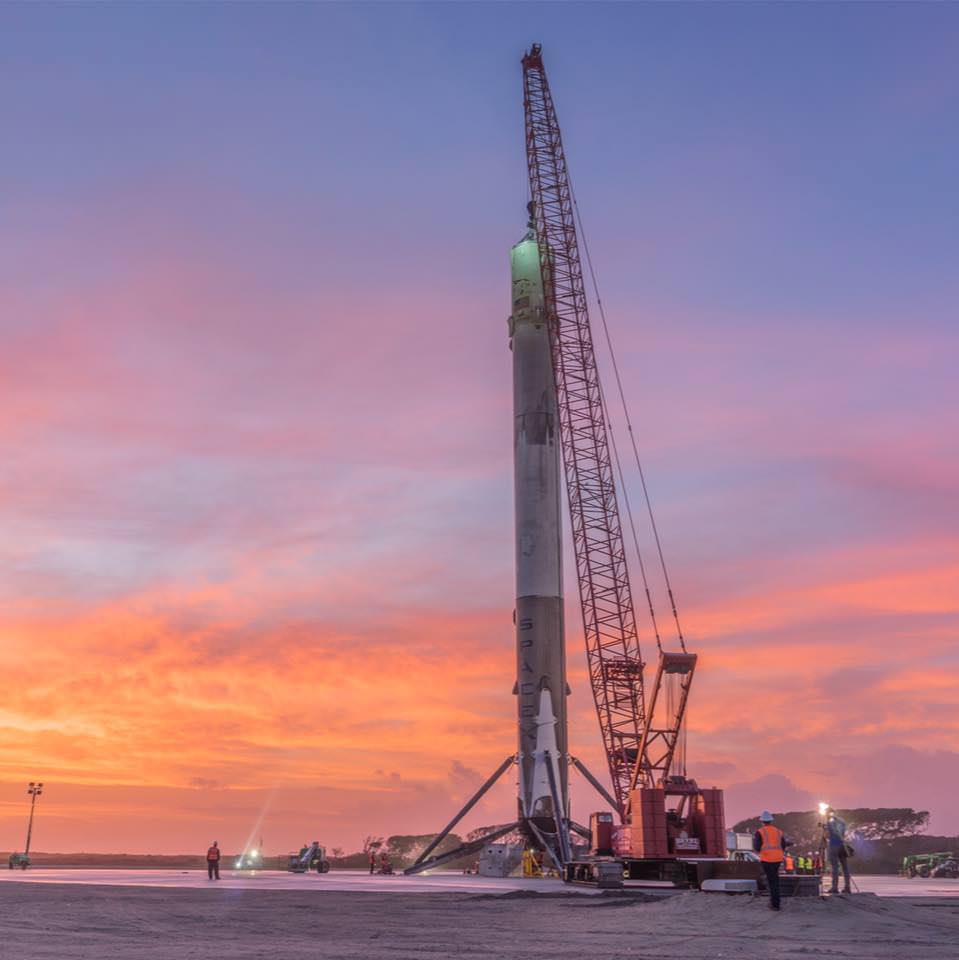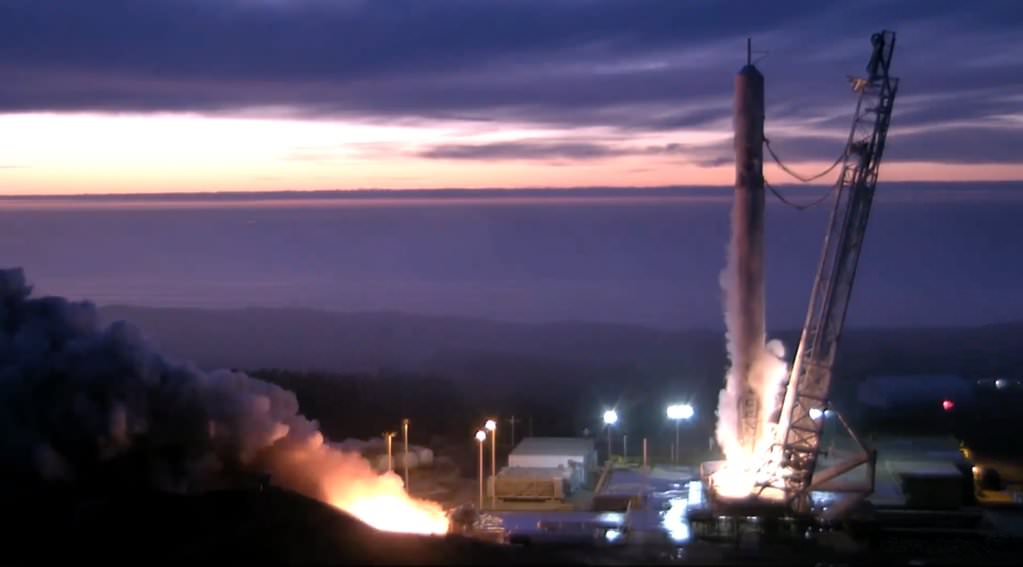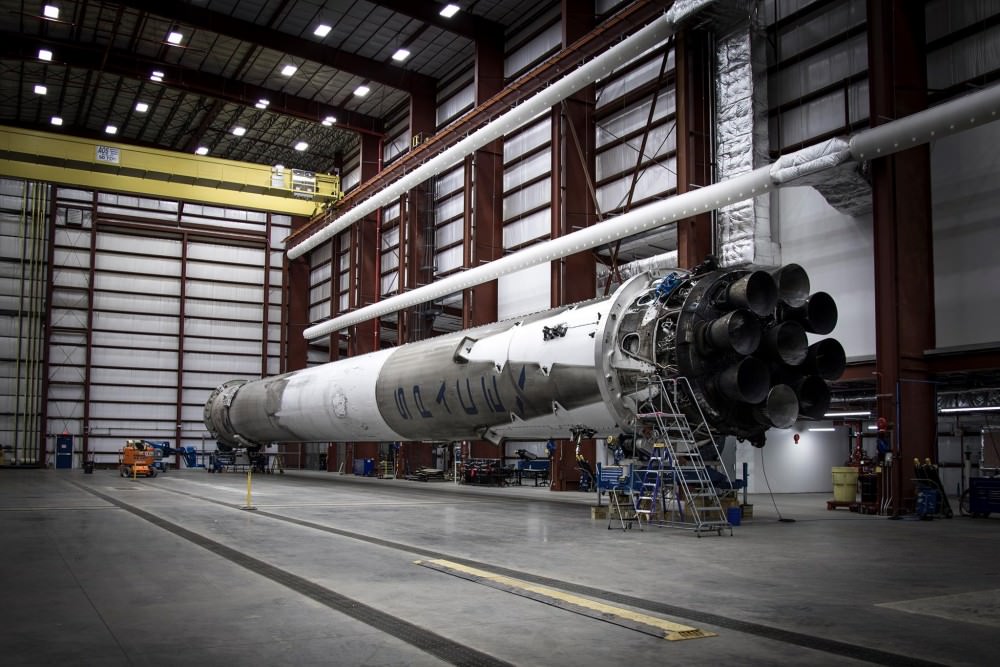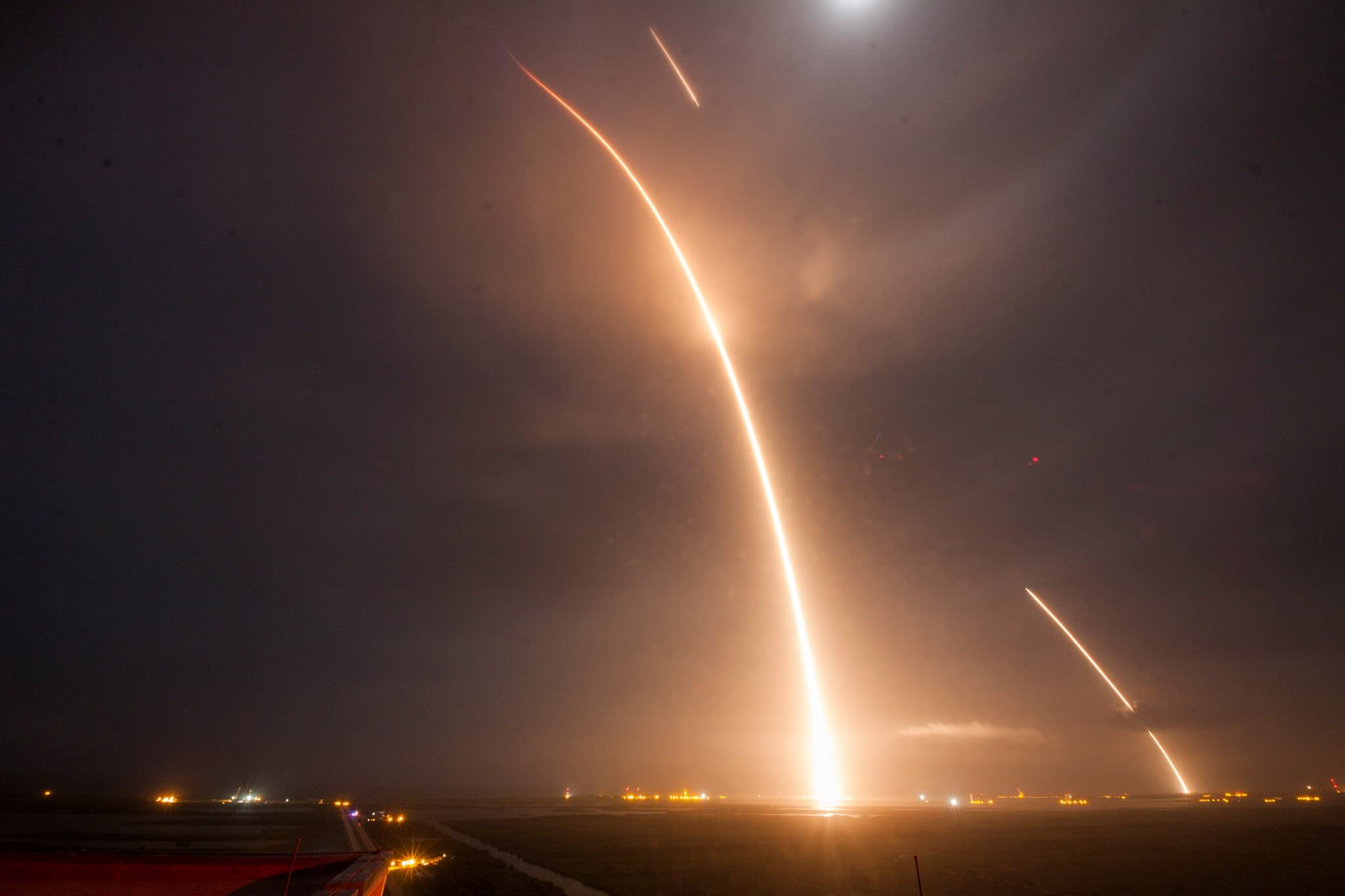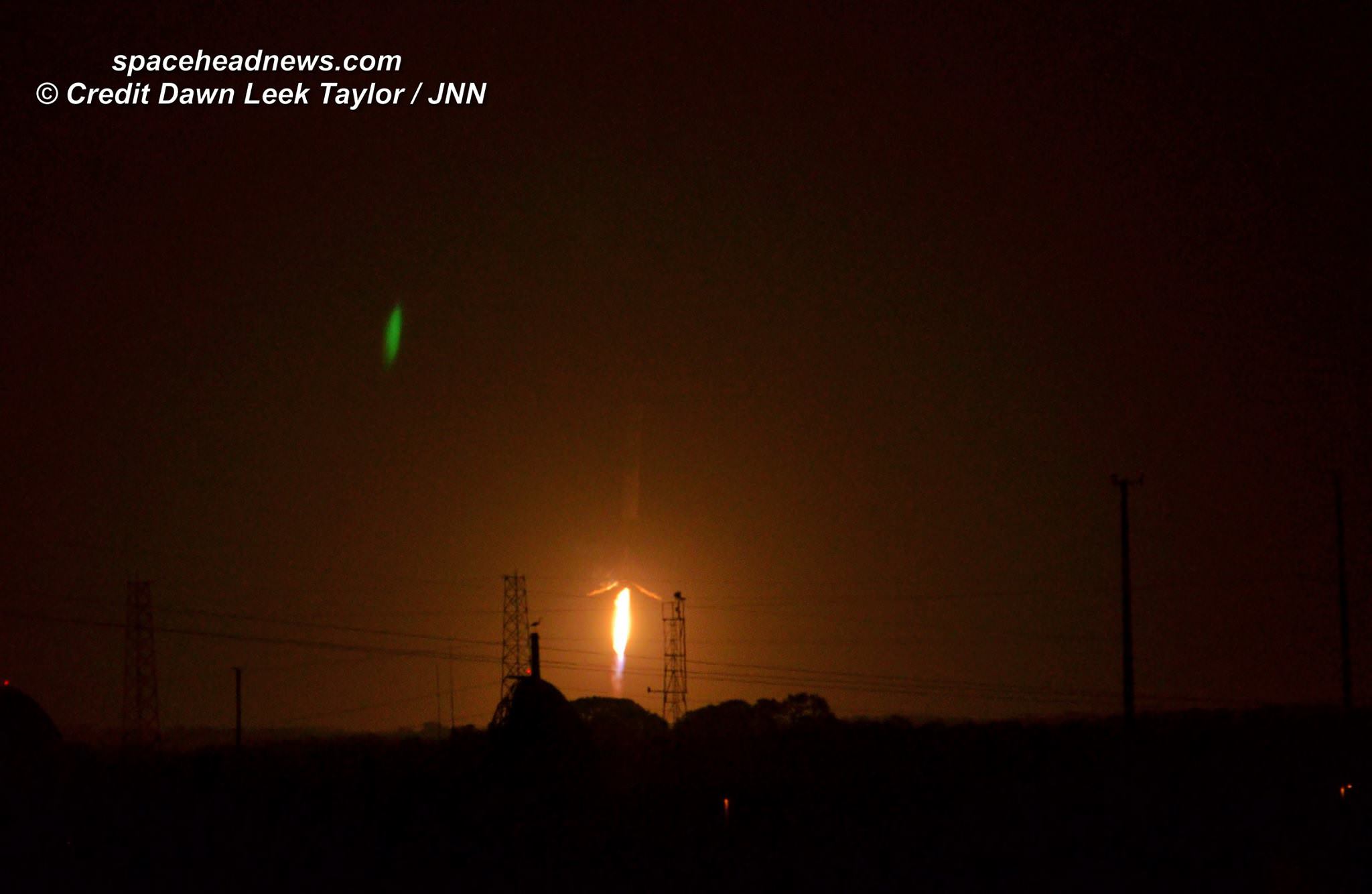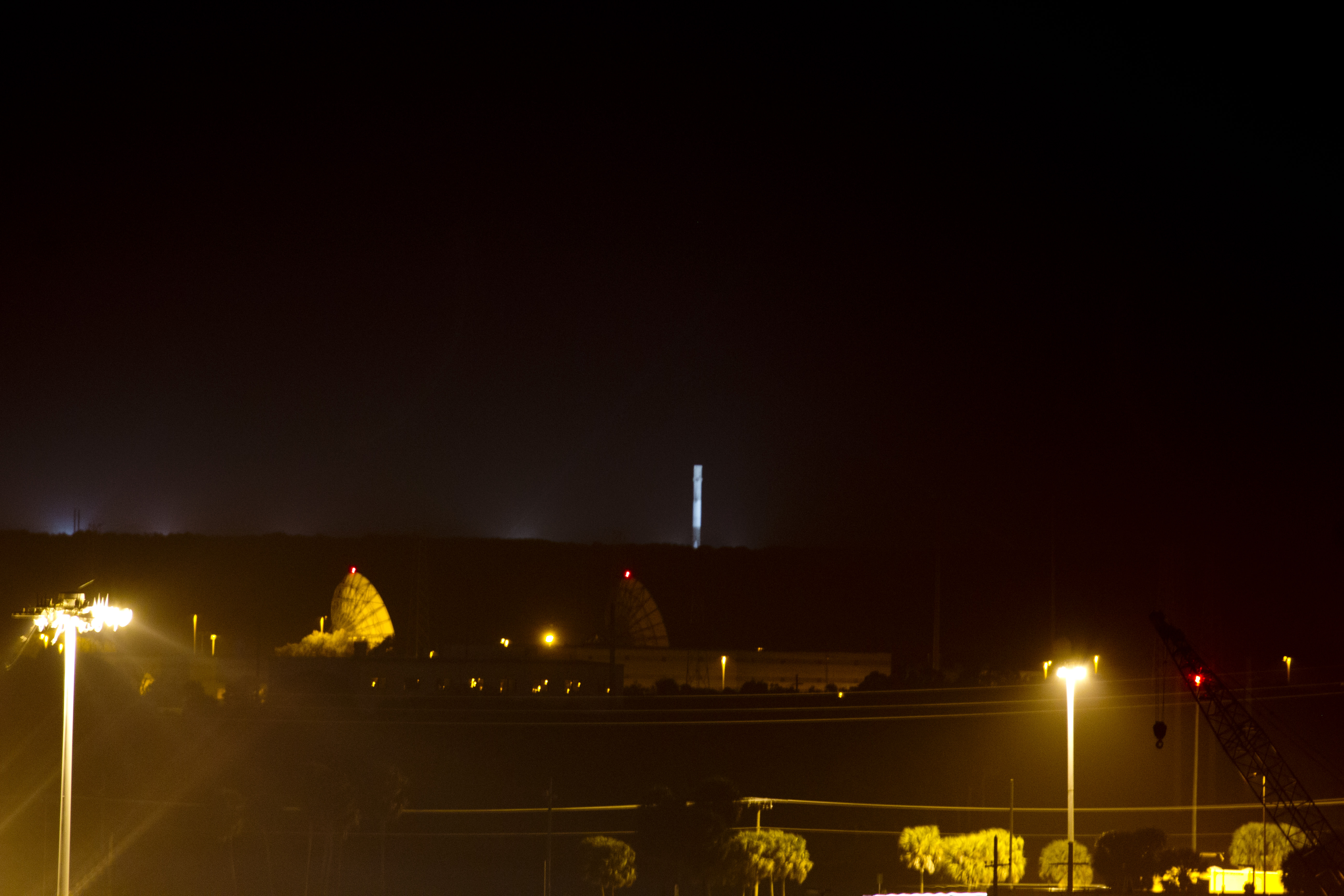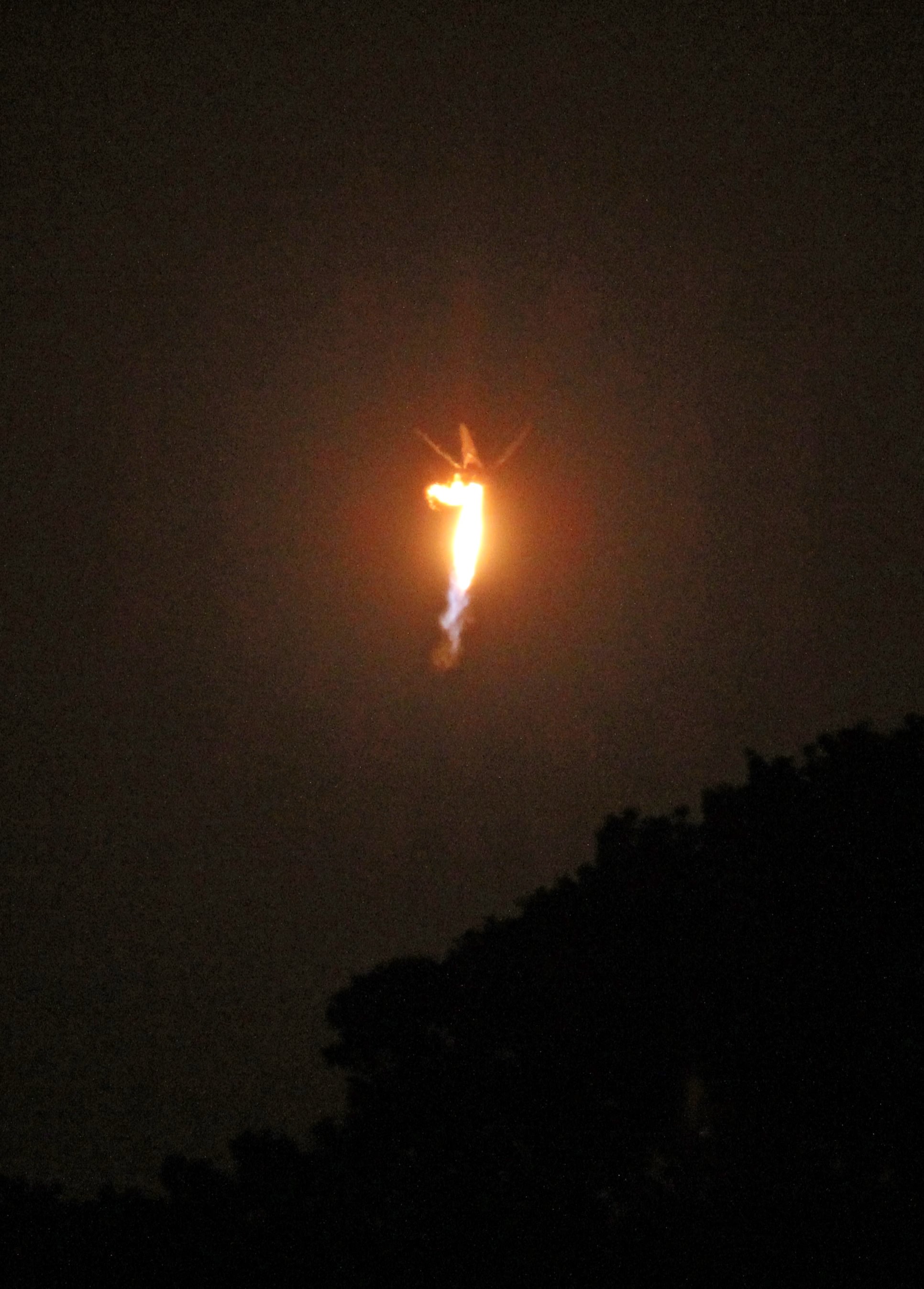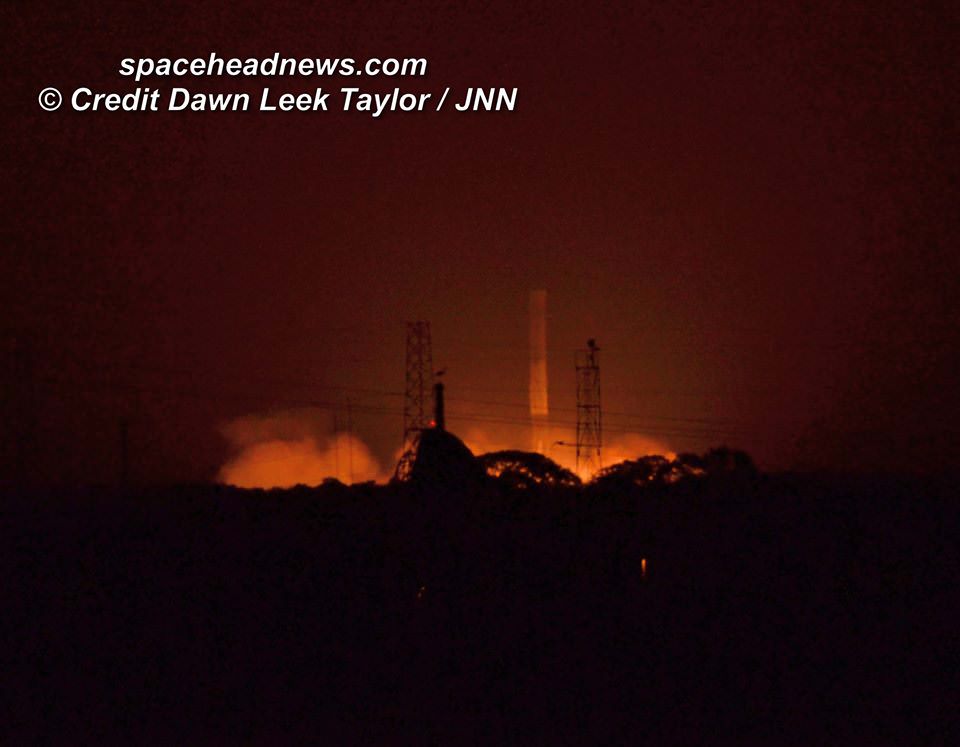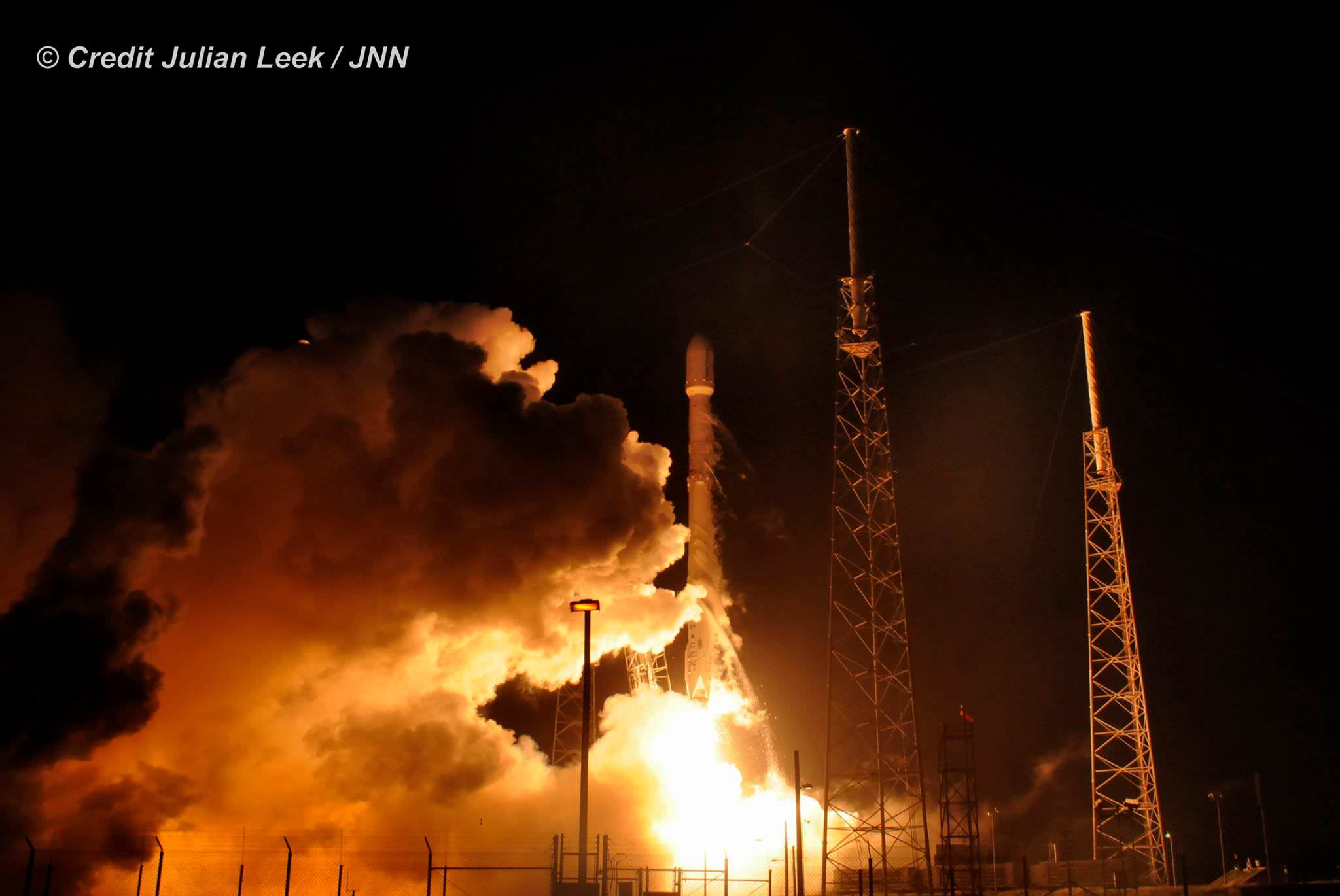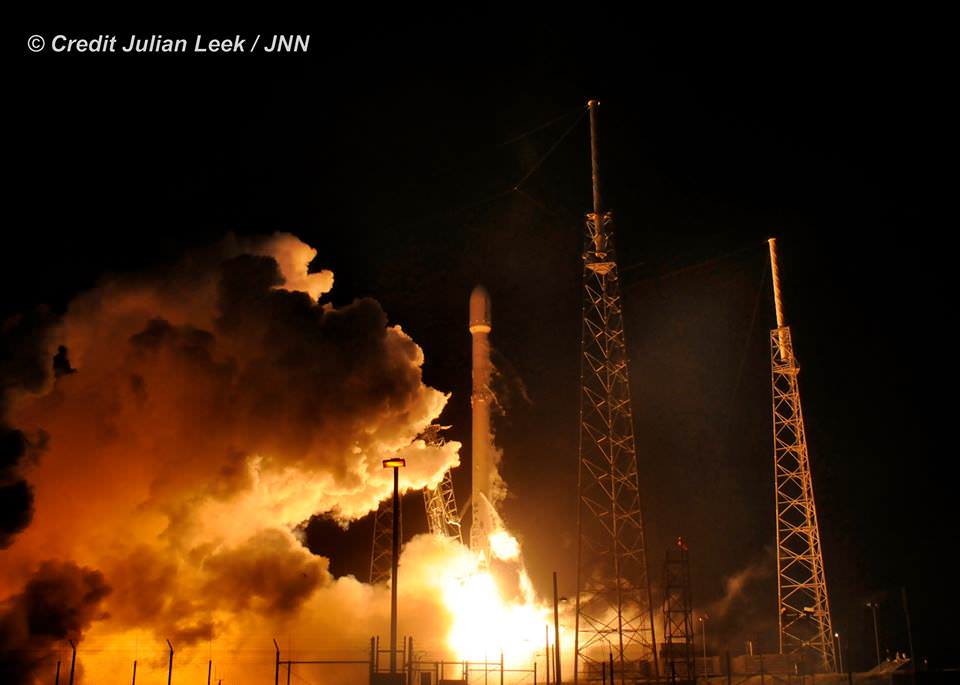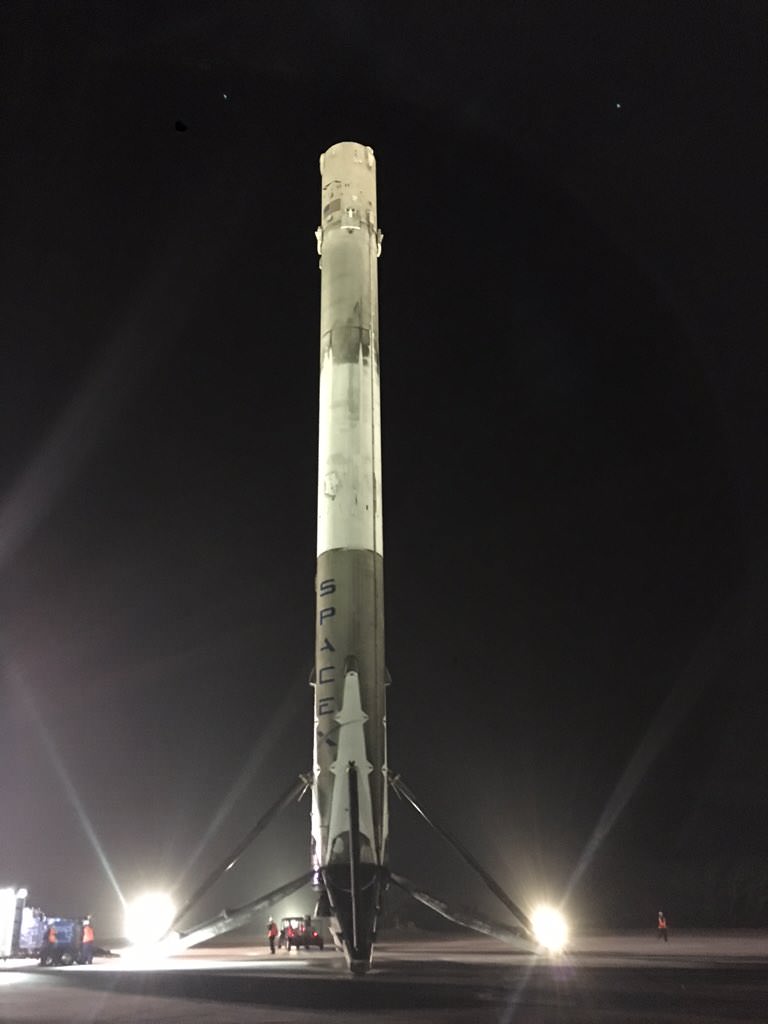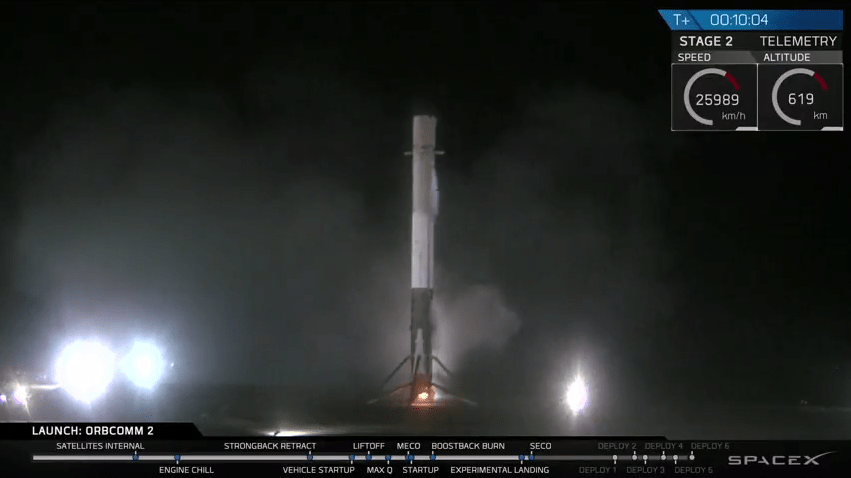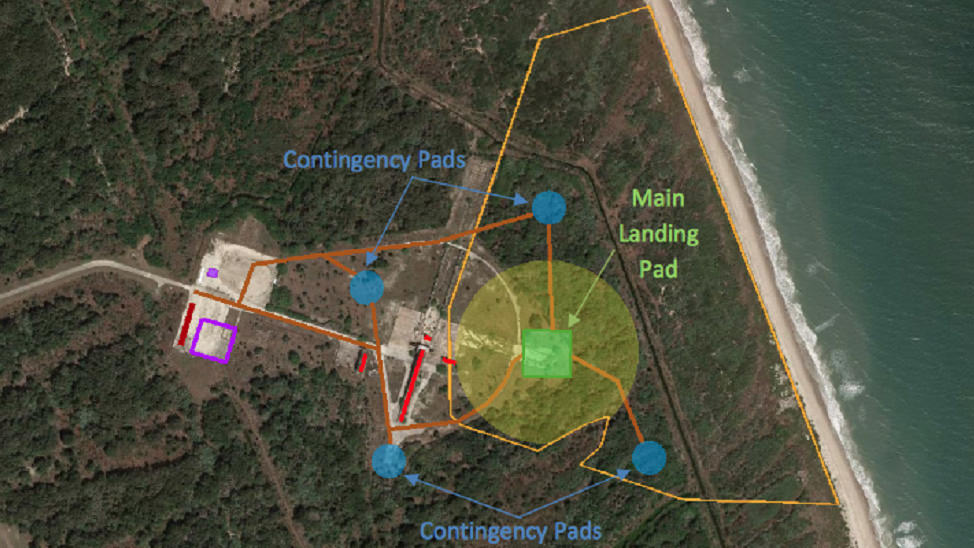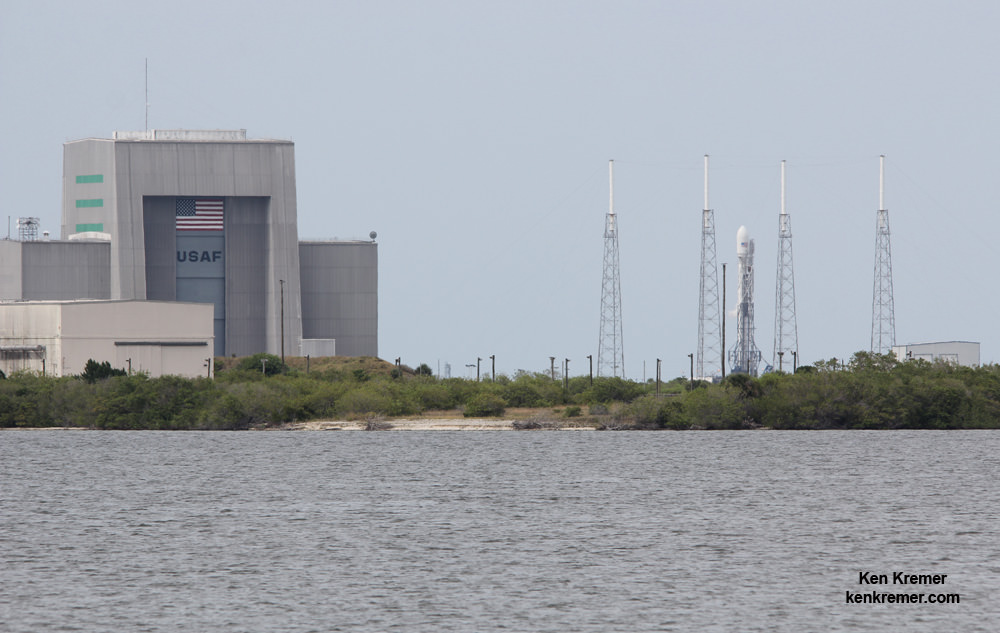
The recovered SpaceX Falcon 9 first stage booster that successfully carried out history’s first upright touchdown from a just flown rocket onto a droneship at sea, has just been moved back to the firms processing hanger at the Kennedy Space Center (KSC) for testing and eventual reflight.
Space photographers and some lucky tourists coincidentally touring through Cape Canaveral Air Force Station in the right place at the right time on a tour bus, managed to capture exquisite up close images and videos (shown above and below) of the rockets ground transport on Tuesday, April 19, along the route from its initial staging point at Port Canaveral to a secure area on KSC.
It was quite a sight to the delight of all who experienced this remarkable moment in space history – that could one day revolutionize space flight by radically slashing launch costs via recycled rockets.
The boosters nine first stage Merlin 1 D engines were wrapped in a protective sheath during the move as seen in the up close imagery.

The SpaceX Falcon 9 had successfully conducted a dramatic propulsive descent and soft landing on a barge some 200 miles offshore in the Atlantic Ocean on April 8, about 9 minutes after blasting off from Cape Canaveral Air Force Station at 4:43 p.m. EDT on the Dragon CRS-8 cargo mission for NASA to the International Space Station (ISS).
The used Falcon 9 booster then arrived back into Port Canaveral, Florida four days later, overnight April 12, after being towed atop the ocean going platform that SpaceX dubs an ‘Autonomous Spaceport Drone Ship’ or ASDS.
The spent 15 story tall Falcon 9 booster was transported to KSC by Beyel Bros. Crane and Rigging, starting around 9:30 a.m.
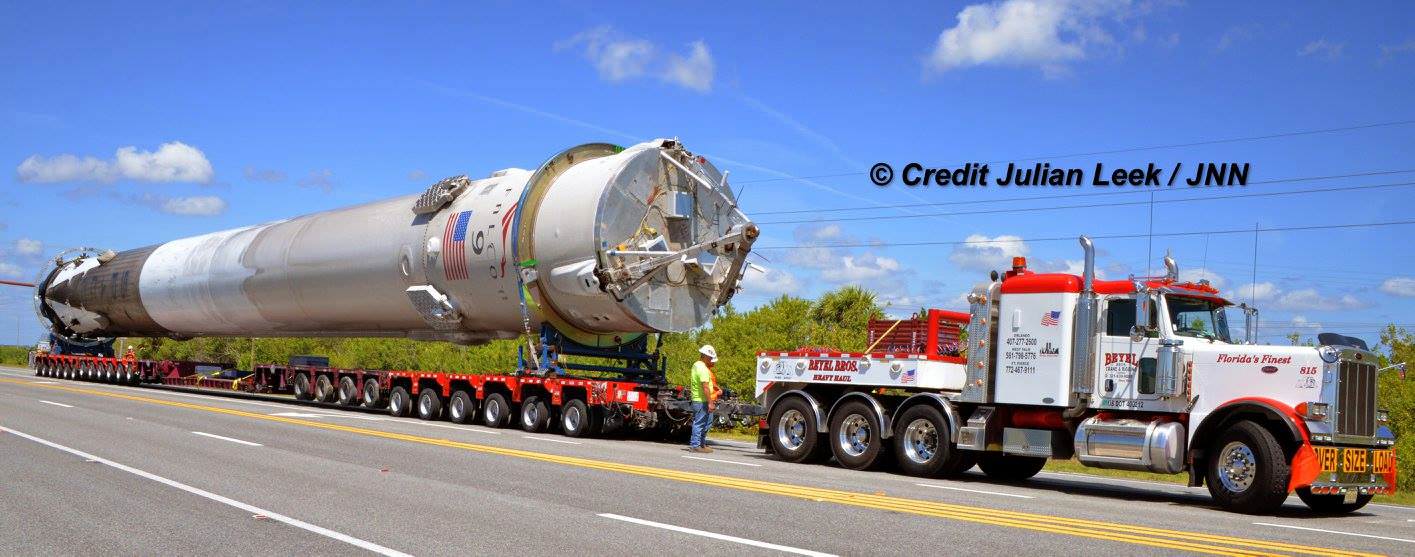
After initial cleaning and clearing of hazards and processing to remove its four landing legs at the Port facility, the booster was carefully lowered by crane horizontally into a retention cradle on a multiwheel combination Goldhofer/KMAG vehicle and hauled by Beyel to KSC with a Peterbilt Prime Mover truck.
The Falcon 9 was moved to historic Launch Complex 39A at KSC for processing inside SpaceX’s newly built humongous hanger located at the pad perimeter.
Indeed this Falcon 9 first stage is now residing inside the pad 39A hanger side by side with the only other flown rocket to be recovered; the Falcon 9 first stage that accomplished a land landing back at the Cape in December 2015 – as shown in this image from SpaceX CEO Elon Musk titled “By land and sea”.
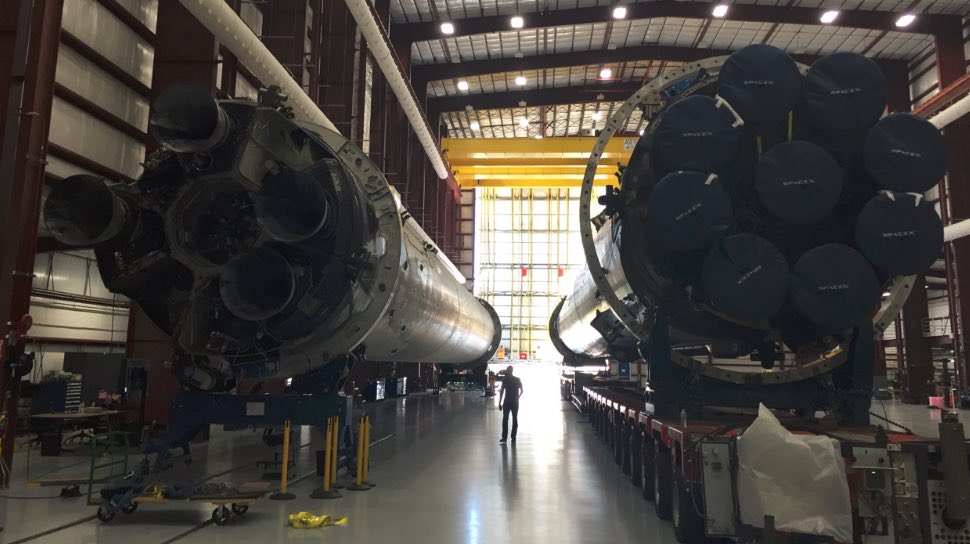
Watch this video of the move taken from a tour bus:
SpaceX engineers plan to conduct a series of some 12 test firings of the first stage Merlin 1 D engines to ensure all is well operationally in order to validate that the booster can be re-launched.
It may be moved back to Space Launch Complex-40 for the series of painstakingly inspections, tests and refurbishment.
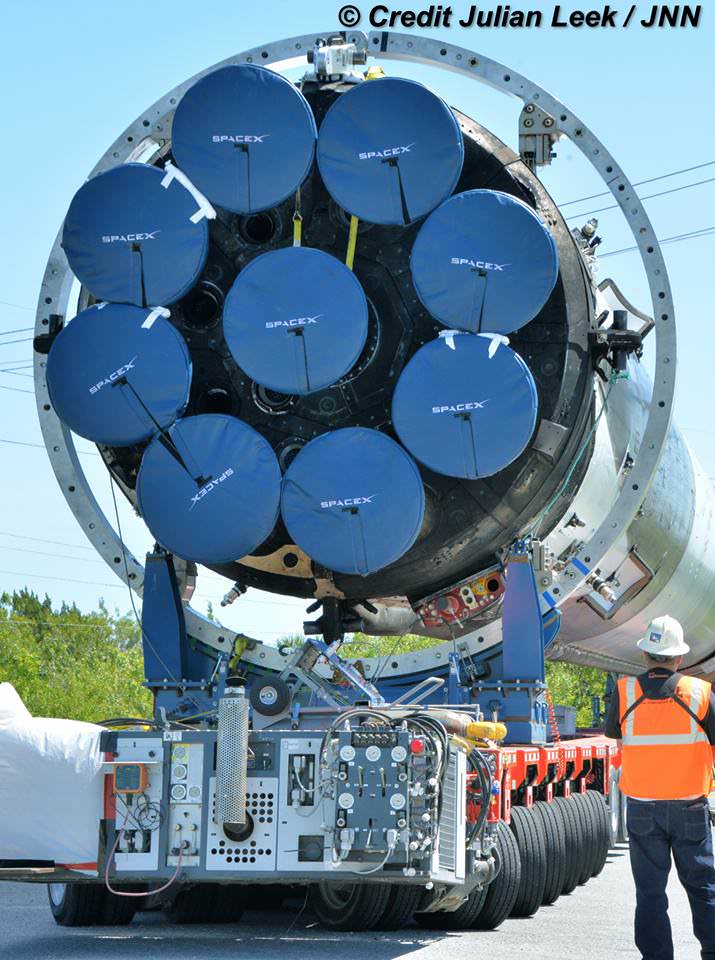
SpaceX hopes to refly the recovered booster in a few months, perhaps as early as this summer.
The vision of SpaceX’s billionaire founder and CEO Elon Musk is to dramatically slash the cost of access to space by recovering the firms rockets and recycling them for reuse – so that launching rockets will one day be nearly as routine and cost effective as flying on an airplane.
The essential next step after recovery is recycling. Musk said he hopes to re-launch the booster this year.
Whenever it happens, it will count as the first relaunch of a used rocket in history.
SpaceX has leased Pad 39A from NASA and is renovating the facilities for future launches of the existing upgraded Falcon 9 as well as the Falcon Heavy currently under development.
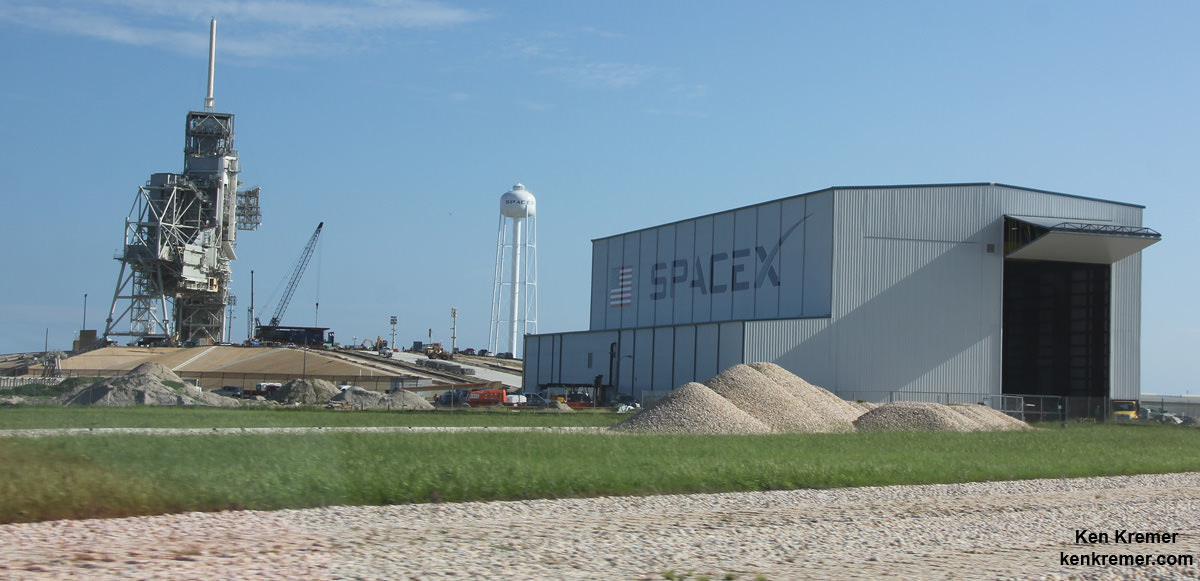
Landing on the barge was a secondary goal of SpaceX and not part of the primary mission sending science experiments and cargo to the ISS crew under a resupply contract with for NASA.
Watch this SpaceX Falcon 9/Dragon CRS-8 launch video from my video camera placed at the pad:
Video Caption: Spectacular blastoff of SpaceX Falcon 9 rocket carrying Dragon CRS-8 cargo freighter bound for the International Space Station (ISS) from Space Launch Complex 40 on Cape Canaveral Air Force Station, FL at 4:43 p.m. EST on April 8, 2016. Up close movie captured by Mobius remote video camera placed at launch pad. Credit: Ken Kremer/kenkremer.com
Stay tuned here for Ken’s continuing Earth and planetary science and human spaceflight news.

